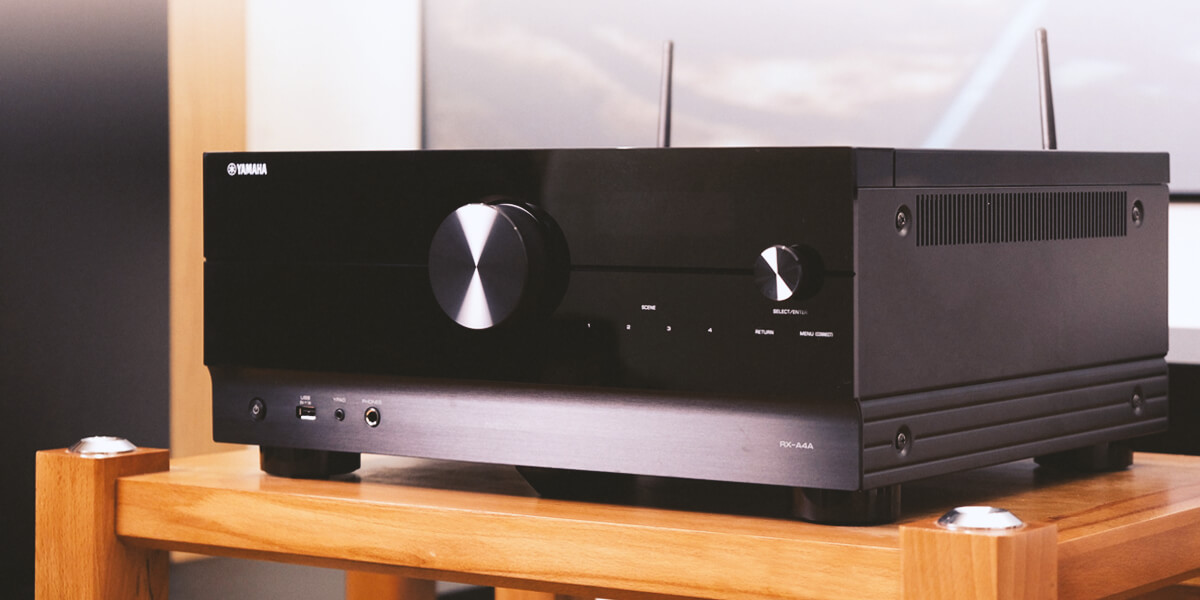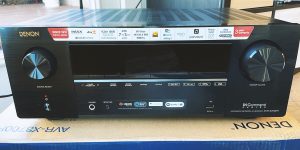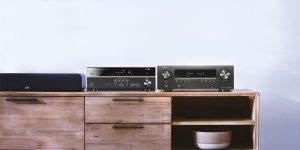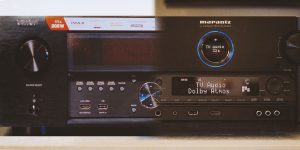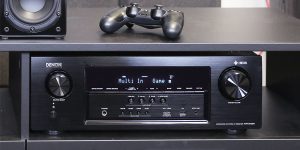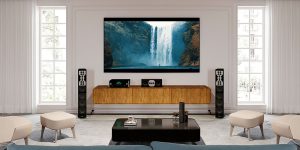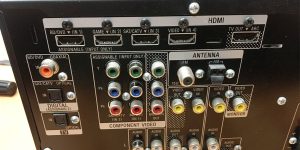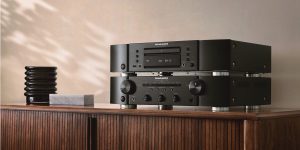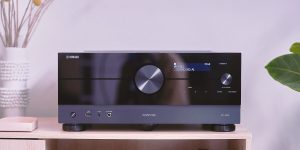Marantz and Yamaha are two of the most well-known brands in the audio industry, each with a rich history and a strong following of fans who appreciate the quality and sound of their devices. So, asking whether to choose Marantz or Yamaha is as natural as picking one of their AV receivers as the “heart” of the home entertainment system.
Established in 1952, Marantz has produced high-quality audio components for over six decades. The company has a reputation for producing audio equipment with exceptional sound and build quality. In addition, it is famous for delivering a warm and detailed sound that many audiophiles love.
Similarly, Yamaha has been a leader in the audio industry for over a century, with roots dating back to the late 1800s. Today, the company is known for producing a range of high-quality audio equipment, including AV receivers, that deliver rich and detailed sound.
In this article, I selected some of the coolest receivers from Marantz and Yamaha, ranging from entry-level models to high-end ones. I aim to review and compare these devices to find the more reasonable option based on features, performance, and other aspects in their price range. Whether you’re a seasoned user of AV receivers or just looking for an upgrade, my article will help you make an informed decision.
Mid-priced AVR comparison
Marantz CINEMA 60 vs Yamaha RX-A4A
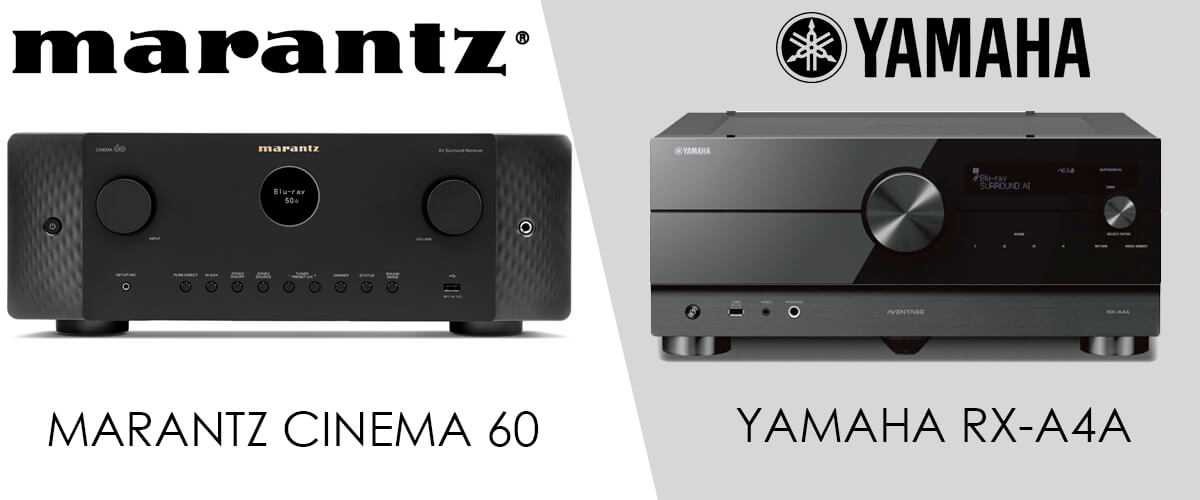
| Model | Marantz CINEMA 60 | Yamaha RX-A4A |
| Channels | 7.2 | 7.2 |
| Power output | 100W/8 ohm, 140W/6 ohm | 110W/8 ohm |
| Sound features | DTS HD Master, DTS:X, DTS Neural:X, DTS Virtual:X, Dolby TrueHD, Dolby Atmos, Atmos Height Virtualization, Dolby Surround | DTS HD Master, DTS:X, Dolby TrueHD, Dolby Atmos, Atmos Height Virtualization, Dolby Surround, Cinema DSP |
| Multichannel Pre Out | Yes (7.1) | Yes (7.2) |
| HDMI inputs/outputs | 6/2, 8K/60Hz, 4K/120Hz pass-through, upscales video signals to HD and Ultra HD (up to 8K) | 7/3, 8K/60Hz, 4K/120Hz pass-through, upscales video signals to HD and Ultra HD (up to 8K) |
| Video Features | Dolby Vision, HDR 10+, HDMI ARC, HDMI eARC, HDMI CEC | Dolby Vision, HDR 10+, HDMI ARC, HDMI eARC, HDMI CEC |
| Video Conversion Analog to HDMI | no | no |
| Analog to HDMI Scaling | no | no |
The Marantz CINEMA 60 is a 5.2 channel receiver while the Yamaha surpassed its competitor, as their RX-A4A is a 7.2 channel unit. Both receivers have similar power output—the Marantz CINEMA 60 delivers 90W per channel with 8-ohm speakers and 75W with 6-ohm speakers, and the Yamaha RX-A4A delivers 80W per channel with 8-ohm speakers and 70W with 6-ohm speakers. Marantz is a bit more powerful, but the difference is negligible.
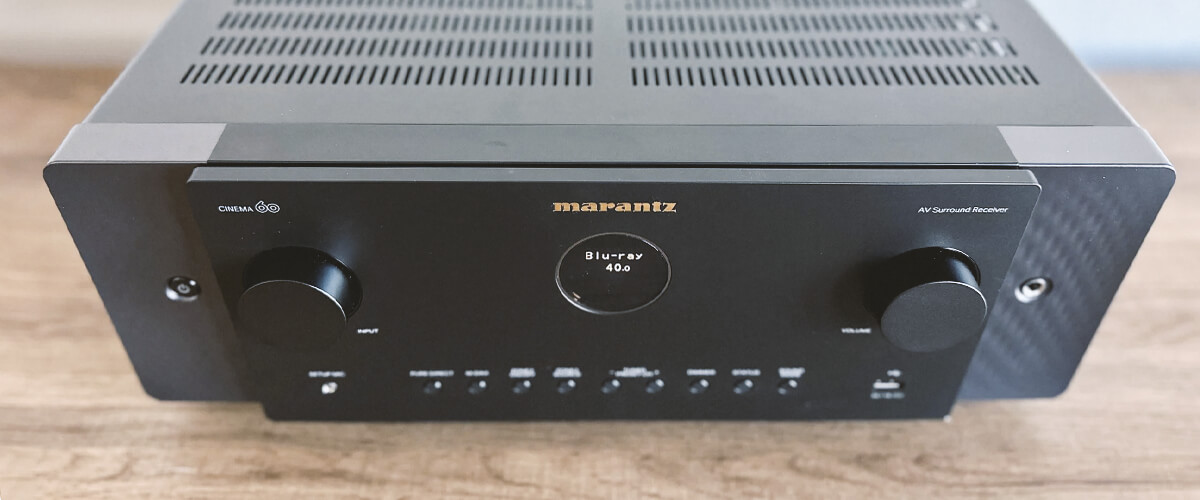
The Marantz CINEMA 60 has 7 HDMI inputs and 3 HDMI outputs, while the Yamaha is slightly inferior as the RX-A4A has 6 HDMI inputs and 3 HDMI outputs. However, they both support HDCP 2.3 and 4K/60p video resolution.
The units support HDR10, Dolby Vision, and HLG HDR formats. Also, the receivers have similar video features, including 4:4:4 color resolution and HDR to SDR conversion. They also work with HDR10+ and Dolby Vision IQ. In addition, these two models offer built-in Wi-Fi and Bluetooth, as well as support for multiroom audio and music streaming services, such as Spotify, Amazon Music, and Apple Music.
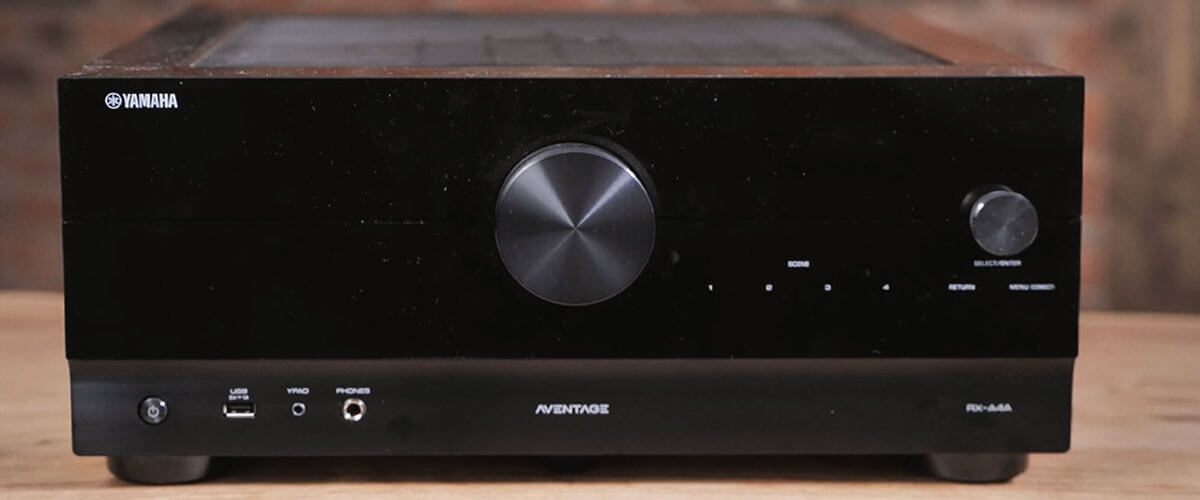
The units offer a wide range of sound features. Thus all modern surround sound formats are here, including Dolby Atmos and DTS:X. The sound quality of the units also varies, but still, both receivers showed themselves well. Marantz CINEMA 60 offered a warm and smooth sound with clear dialogue and powerful bass on my setup. In turn, the RX-A4A has a more dynamic sound with a wider sound range, supplemented by greater detail in the high and low frequencies.
Altogether, both receivers offer high-quality sound performance, but there are some differences to consider. The Marantz CINEMA 60 has a warm and smooth sound profile that may be preferred by those who enjoy a more relaxed audio experience. It also has a larger number of built-in amplifiers, which can be beneficial for those who have used a large room for their home theater setup. On the other hand, the Yamaha RX-A4A has a more dynamic sound profile that may appeal to those who enjoy a more energetic audio experience. It also supports both Amazon Alexa and Apple Siri voice control, which can be convenient for those with smart home devices. So, in my opinion, the RX-A4A is slightly more advantageous than the competitor, and Yamaha scores the first round of the Marantz vs. Yamaha battle.
Marantz CINEMA 60
Pros
- Detailed Sound.
- Easy Setup.
- Has more HDMI inputs than the competitor.
Cons
- Harder to install.
- Supports only 5 channels.
Yamaha RX-A4A
Pros
- 7.2 channel configuration.
- Advanced features and customization options.
- Offers additional power.
Cons
- May be challenging for inexperienced users to set up and use.
Marantz NR1711 vs Yamaha RX-A2A
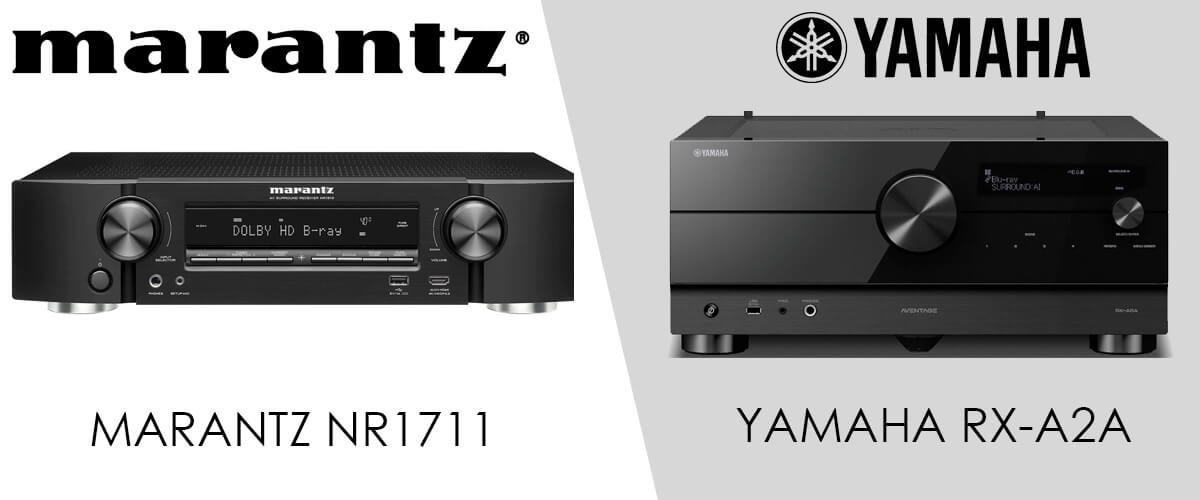
| Model | Marantz NR1711 | Yamaha RX-A2A |
| Channels | 7.2 | 7.2 |
| Power output | 50W/8 ohm, 70W/6 ohm | 100W/8 ohm |
| Sound features | DTS HD Master, DTS:X, DTS Neural:X, DTS Virtual:X, Dolby TrueHD, Dolby Atmos, Atmos Height Virtualization, Dolby Surround | DTS HD Master, DTS:X, Dolby TrueHD, Dolby Atmos, Atmos Height Virtualization, Dolby Surround, Cinema DSP |
| Multichannel Pre Out | Yes (7.1) | Yes (2.2) |
| HDMI inputs/outputs | 6/2, 8K/60Hz, 4K/120Hz pass-through, upscales video signals to HD and Ultra HD (up to 8K) | 7/1, 8K/60Hz, 4K/120Hz pass-through, upscales video signals to HD and Ultra HD (up to 4K) |
| Video Features | Dolby Vision, HDR 10+, HDMI ARC, HDMI eARC, HDMI CEC | Dolby Vision, HDR 10+, HDMI ARC, HDMI eARC, HDMI CEC |
| Video Conversion Analog to HDMI | no | no |
| Analog to HDMI Scaling | no | no |
I would like to start the second round of the Yamaha and Marantz receiver comparison in the mid-price range with the number of channels, as both devices are 7.2 channel units. They are also similar in terms of power output, with the Marantz NR1711 delivering 70W per channel with 8-ohm speakers and 50W with 6-ohm speakers, and the Yamaha RX-A2A delivering 80W per channel with 8-ohm speakers and 70W with 6-ohm speakers. This time, Yamaha holds the tiny dominance with its higher power.
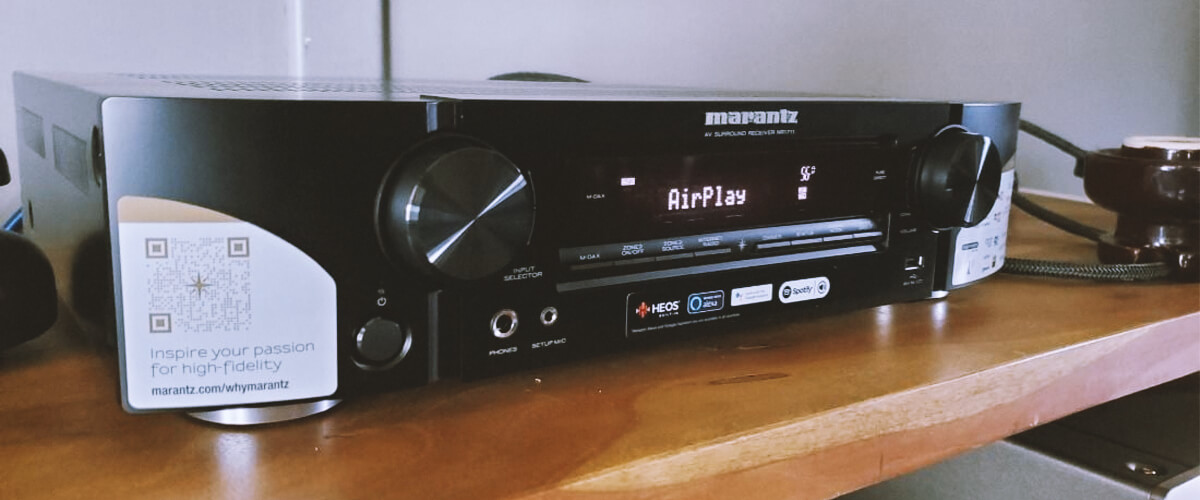
The Marantz NR1711 has 8 HDMI inputs and 2 HDMI outputs, while the Yamaha RX-A2A has 6 HDMI inputs and 1 HDMI output. The HDMI ports of both receivers have built-in HDCP 2.3 security protocol and can work up to 4K resolution at 60Hz. Regarding video features, the units work equally with HDR10, Dolby Vision, and HLG HDR formats. They also have similar upscaling features and can improve the quality to make it 4K-like. The other features of both units include 4:4:4 color resolution, HDR to SDR conversion, and support for HDR10+ and Dolby Vision IQ.
Moving to the sound, the receivers support the major surround sound formats, including Dolby Atmos and DTS:X. Another thrilling aspect is that Yamaha and Marantz decided not to save money on these two units and offer a fully capable Zone 2 feature and extensive streaming capabilities, including Spotify, Amazon Music, and Apple Music. Consequently, both receivers have built-in Ethernet, Wi-Fi, Bluetooth, and FM radio.
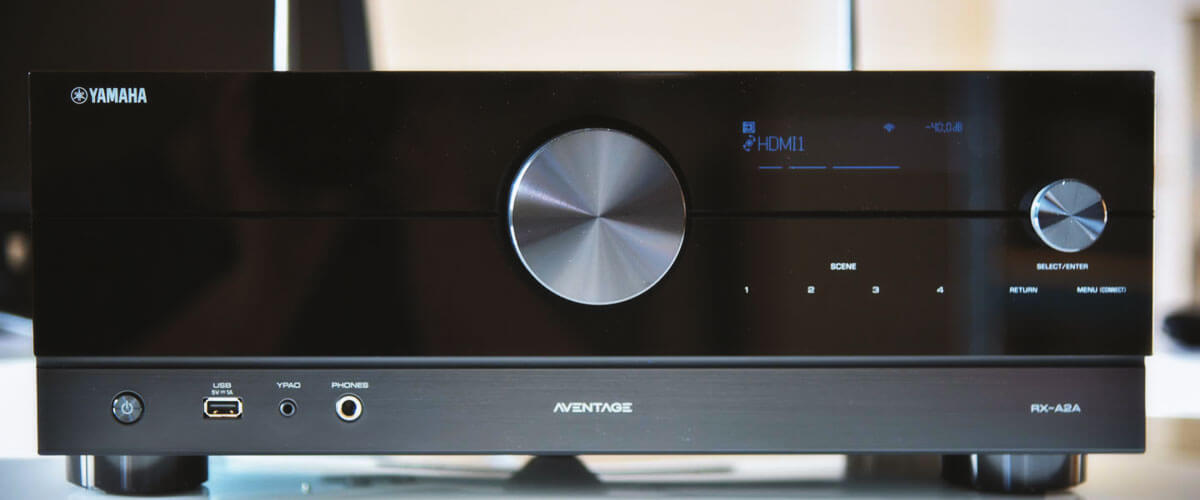
Marantz sticks to its traditions, and their NR1711 gave me a pleasant, warm, and smooth sound. It also managed to deliver dialogue even during the active action scenes. In turn, Yamaha RX-A2A gave me a clear and crisp sound. It also didn’t disappoint with the sound stage, even in my relatively large room.
While providing quality surround sound in movies, both receivers tended to max out when I pushed them to their limits in music. So, the RX-A2A performed a bit better with music, but still not for audiophiles.
Marantz NR1711 and Yamaha RX-A2A are high-quality AV receivers offering good sound quality and a range of features. The Marantz NR1711 is a good choice for those who value versatility (additional HDMI inputs and outputs). On the other hand, the Yamaha RX-A2A is ideal for those looking for advanced features and customization options at a more affordable price point. Therefore, I cannot name a clear winner here and recommend making a choice based on personal preferences.
Marantz NR1711
Pros
- Has more HDMI inputs and outputs than RX-A2A.
- High-quality sound with good detail and clarity in movies.
Cons
- May have a higher price.
- Pales in music.
Yamaha RX-A2A
Pros
- Interesting design.
- Performs well in music.
Cons
- Offers fewer HDMI outputs than the competitor.
Entry-level AVR comparison
Marantz NR1510 vs Yamaha RX-V4A
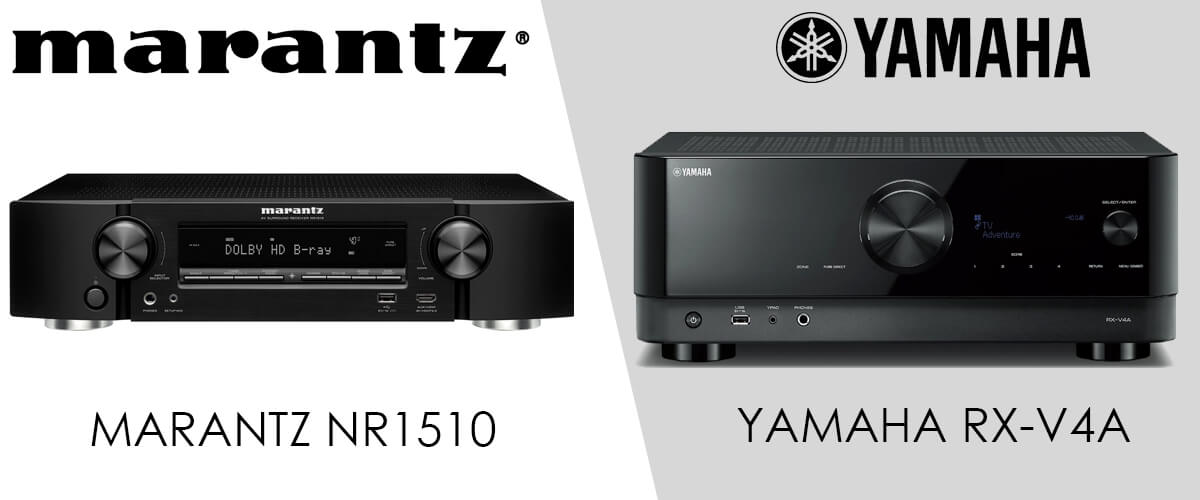
| Model | Marantz NR1510 | Yamaha RX-V4A |
| Channels | 5.2 | 5.2 |
| Power output | 50W/8 ohm, 60W/6 ohm | 80W/8 ohm |
| Sound features | DTS HD Master, Audyssey Dynamic EQ, Compressed Audio Enhancer: MDAX2 | DTS HD Master, DTS:X, Dolby TrueHD, Dolby Digital Plus, Cinema DSP |
| Multichannel Pre Out | Yes (5.1) | Yes (0.2) |
| HDMI inputs/outputs | 6/2, 4K/60Hz | 4/1, 8K/60Hz, 4K/120Hz pass-through, upscales video signals to HD and Ultra HD (up to 4K) |
| Video Features | Dolby Vision, HDR 10, HDMI ARC, HDMI eARC, 3D Signal Pass-Through | Dolby Vision, HDR 10+, HDMI ARC, HDMI eARC |
| Video Conversion Analog to HDMI | no | no |
| Analog to HDMI Scaling | no | no |
Traditionally for my Yamaha vs. Marantz comparison, I want to begin the review of the entry-level AV receivers with the number of channels. Marantz gave Yamaha the upper hand and gave only 5 channels to their NR1510, while Yamaha showed their quality as the RX-V4A is a 7-channel receiver.
The Marantz also doesn’t impress in terms of power, as their NR1510 delivers only 50W per channel with 8-ohm speakers and 40W with 6-ohm speakers. At the same time, the Yamaha RX-V4A delivers 80W per channel with 8-ohm speakers and 70W with 6-ohm speakers. Not mighty, but still more than the NR1510. So far, Yamaha has overwhelmed its opponent in the entry-level segment, but Marantz also has an ace in their sleeve.
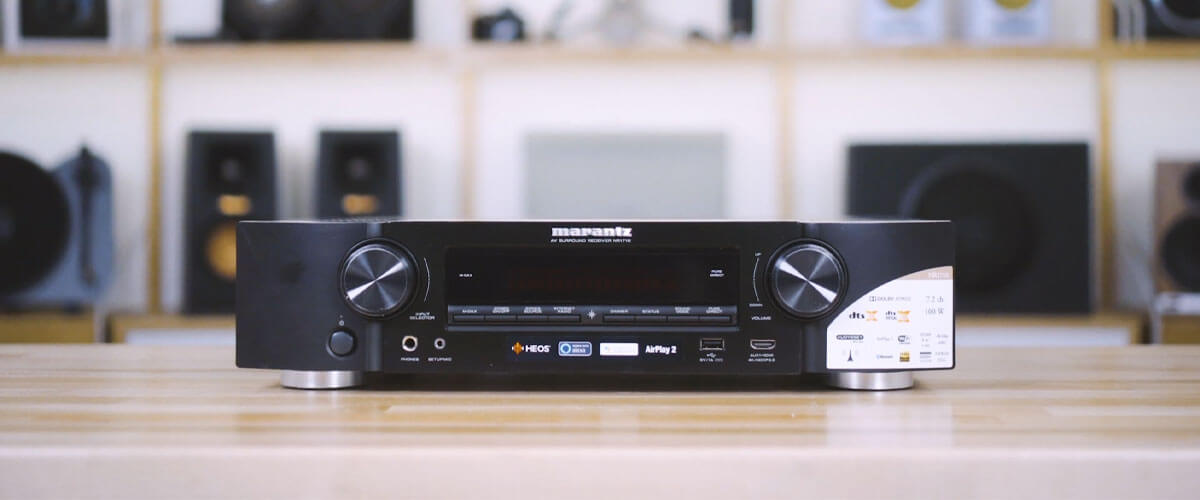
Not surprisingly, talking about the ports and connectivity, the Marantz NR1510 has 6 HDMI inputs and 1 HDMI output, while the Yamaha RX-V4A has 6 HDMI inputs and 2 HDMI outputs. And again, the RX-V4A looks like a bit more interesting choice. At the same time, both units support HDCP 2.3 and 4K/60p video resolution.
Other video features include the support of HDR10 and Dolby Vision HDR formats. They both offer 4:4:4 color resolution. In addition, the RX-V4A and NR1510 are capable of HDR to SDR conversion and support the complete family of HDR10+ and Dolby Vision IQ.
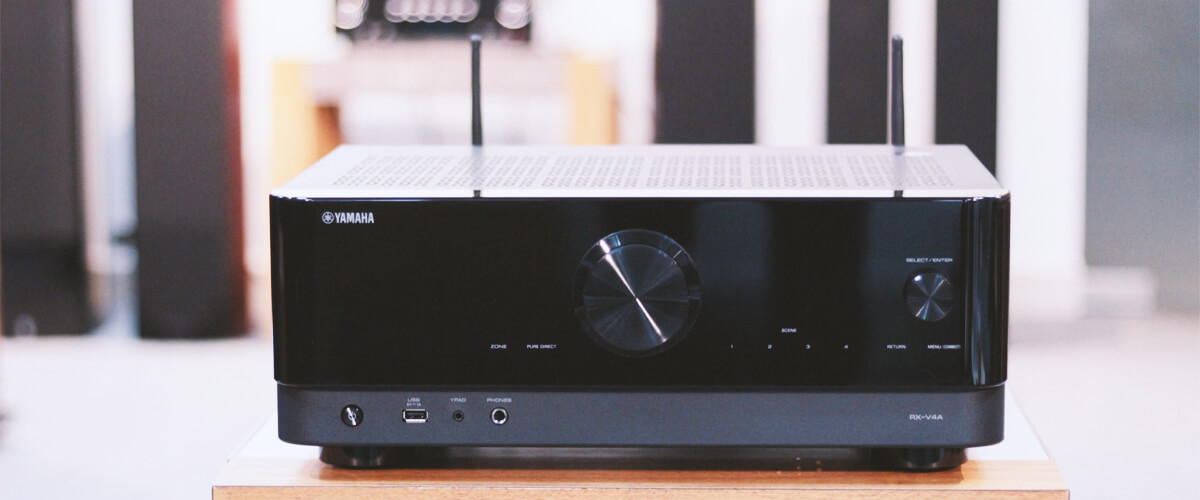
These models support the major surround sound formats, including Dolby Atmos and DTS:X. The units also offer built-in Wi-Fi and Bluetooth, as well as support for multiroom audio and music streaming services, such as Spotify, Amazon Music, and Apple Music.
By that moment, I felt a lack of hope for Marantz to show quality with their NR1510, but the receiver pleasantly surprised me with its detailed and punchy good low-end extension. At some point, it even reminded me of NR1711 because it sounded pretty good. Though, the magic quickly disappeared when I tried cranking the volume up. The lack of power is undeniable. The RX-V4A showed a much deeper and tighter bass and well-defined treble. It is not surprising that Yamaha RX-V4A showed itself better in movies. Yes, its sound was a little flatter than the RX-A2A, but it was still better than the NR1510.
Altogether, while the Marantz NR1510 misses several features the RX-VA4 has, it can still be a good choice for those looking for a compact form factor and high-quality sound at a fair price. However, the Yamaha RX-V4A is ideal for those who need a larger room setup and advanced features. In my opinion, the RX-V4A wins this competition.
Marantz NR1510
Pros
- The sleek design and compact form factor make it ideal for small spaces.
- Detailed and punchy sound.
Cons
- Offers fewer HDMI outputs than the competitor.
- Offers less power.
- Only 5 channels.
Yamaha RX-V4A
Pros
- 7.2 channel configuration is ideal for larger room setups.
- Offers more power.
- Delivers juicy bass and well-defined treble.
Cons
- Could have been easier to set up.
- Randomly has problems with connecting to some devices.
Premium AVR comparison
Marantz SR8015 vs Yamaha RX-A8A
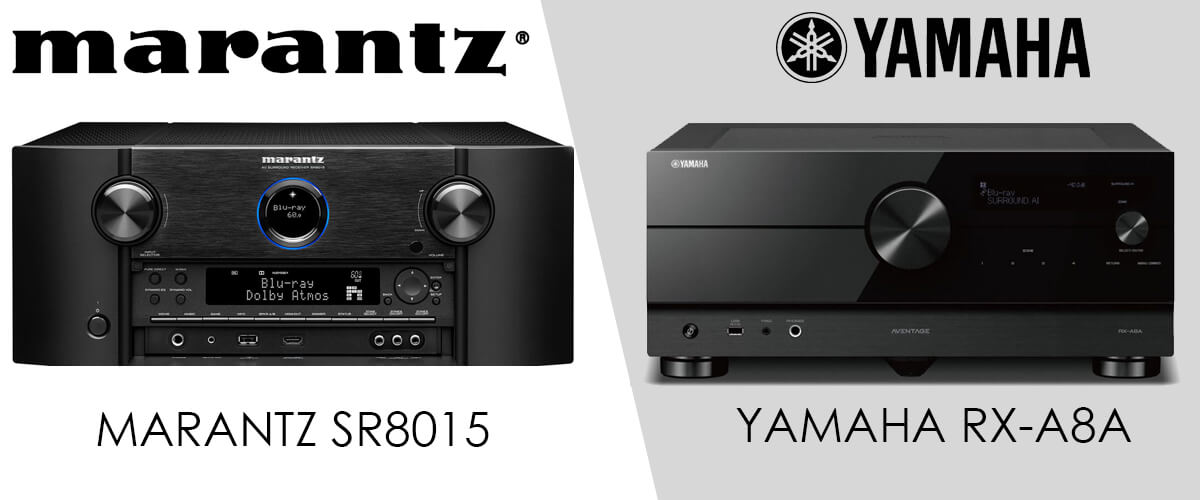
| Model | Marantz SR8015 | Yamaha RX-A8A |
| Channels | 11.2 | 11.2 |
| Power output | 140W/8 ohm, 175W/6 ohm | 150W/8 ohm |
| Sound features | DTS HD Master, DTS:X, DTS Neural:X, DTS Virtual:X, Dolby TrueHD, Dolby Atmos, Atmos Height Virtualization, Dolby Surround, Auro 3D, IMAX Enhanced | DTS HD Master, DTS:X, Dolby TrueHD, Dolby Atmos, Atmos Height Virtualization, Dolby Surround, Cinema DSP, Auro 3D |
| Multichannel Pre Out | Yes (13.2) | Yes (11.2) |
| HDMI inputs/outputs | 7/1, 8K/60Hz, 4K/120Hz pass-through, upscales video signals to HD and Ultra HD (up to 8K) | 7/3, 8K/60Hz, 4K/120Hz pass-through, upscales video signals to HD and Ultra HD (up to 8K) |
| Video Features | Dolby Vision, HDR 10+, HDMI ARC, HDMI eARC, HDMI CEC | Dolby Vision, HDR 10+, HDMI ARC, HDMI eARC, HDMI CEC |
| Video Conversion Analog to HDMI | yes | yes |
| Analog to HDMI Scaling | 480i/576i up to 8K 60/50 | 480i/576i up to 8K 60/50 |
Finally, getting to the most exciting part of the review. As you can see, Marantz and Yamaha offer pretty similar AV receivers in terms of quality and price-to-feature ratio. However, even in the same price range, there is usually no clear winner when comparing their units face to face. I am curious whether this is going to change in the premium range. Traditionally starting with the number of channels: Marantz SR8015 has a 9-channel amplifier while Yamaha RX-A8A is a mighty 11-channel unit.
The Marantz SR8015 also provides 125 watts per channel with 8-ohm speakers and 200 watts per channel with 6-ohm speakers. At the same time, Yamaha RX-A8A can pump up to 140 watts per channel with 8-ohm speakers and 200 watts per channel with 6-ohm speakers. However, this difference can be explained by the increased number of channels and when the units have approximately equal power per channel.
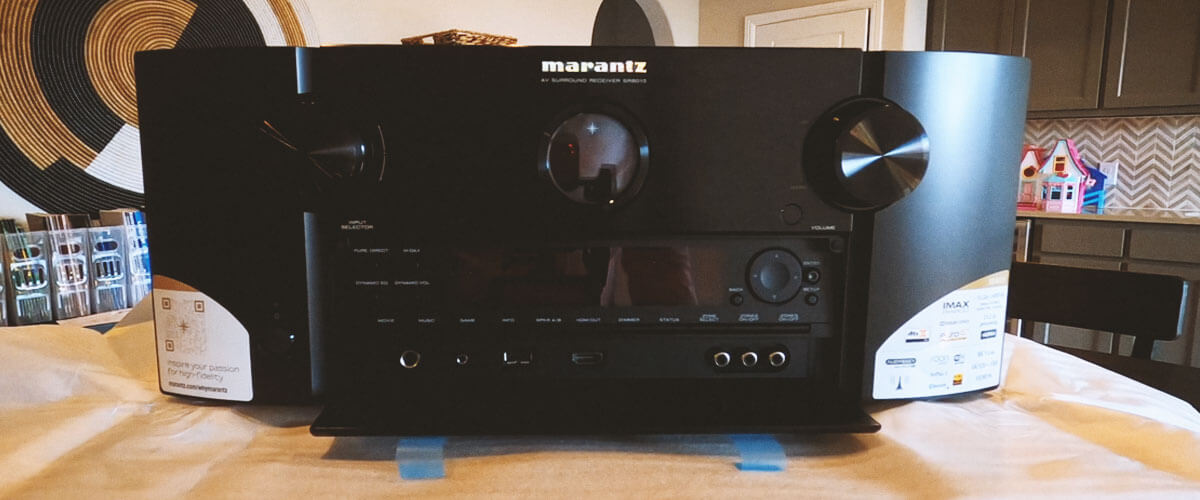
Yamaha RX-A8A has 8 HDMI inputs and 2 HDMI outputs, while Marantz SR8015 has 8 HDMI inputs and 3 HDMI outputs. Not surprisingly, the ports offer HDCP 2.3 security protocol. Talking about resolutions, both receivers work with 4K/60Hz video pass-through and upscaling to 4K resolution. They also offer Dolby Vision and HLG, but none of the units work with HDR10+, so the receivers rely on an older HDR10.
Marantz SR8015 and Yamaha RX-A8A support a wide range of surround sound formats, including Dolby Atmos, DTS:X, and Auro-3D. They also offer rich streaming capabilities, including Spotify, Amazon Music, and Tidal. The units also have Wi-Fi, Bluetooth, and a fully-functional Zone 2.
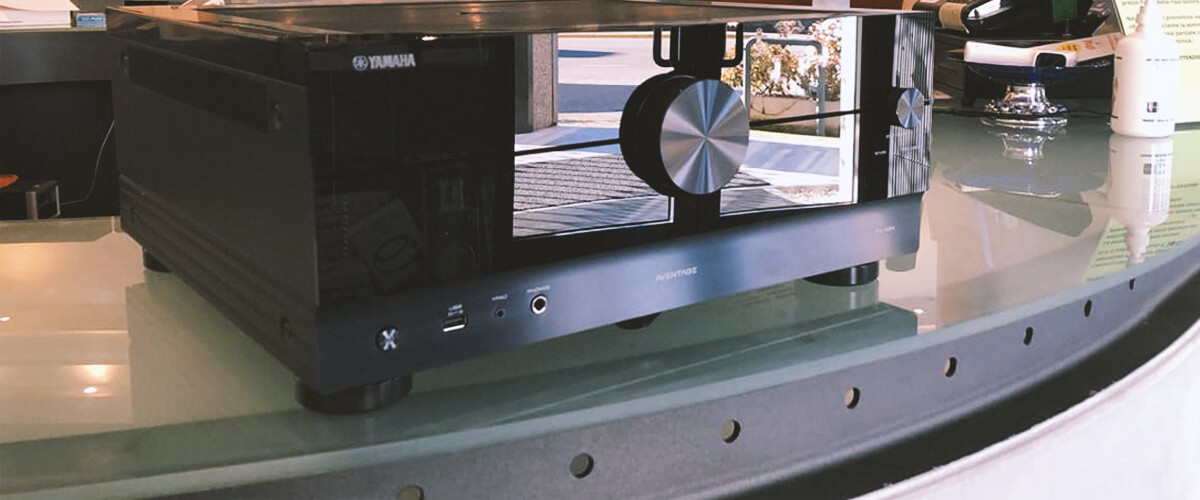
Yamaha RX-A8A and Marantz SR8015 truly inspired me with their sound. When watching movies on Yamaha and Marantz, I had no problems with dialog, bass, balance, or distortions. The same applies to listening to music—very solid results from both companies and their receivers. At the same time, despite Yamaha offering a more powerful bass response, the SR8015 delivers a slightly more balanced sound.
Finally, I can conclude that both the SR8015 and the RX-A8A with honor stand for their manufacturers. If you plan to buy one of these units, you can rest assured that they won’t disappoint you. The main difference is that the Yamaha RX-A8A offers more amplified channels. It is the main factor affecting the choice—if you need more channels, then the RX-A8A is the clear winner. But if you have a standard 7-channel setup, I recommend first listening in person to both devices and making the final choice based on your taste.
Marantz SR8015
Pros
- High-quality build and sleek design.
- Support for multiple audio formats, including Dolby Atmos and DTS:X.
- Good sound quality with clear dialogue and deep bass.
Cons
- The number of channels is less than the competitor’s.
- Complex user interface that is difficult to navigate.
- Powerful sound without distortions.
Yamaha RX-A8A
Pros
- Solid build quality and design.
- Good value for the price.
- 11-channel unit.
- Powerful bass.
Cons
- I encountered a problem when connecting it via Wi-Fi.
- Limited room correction options.
